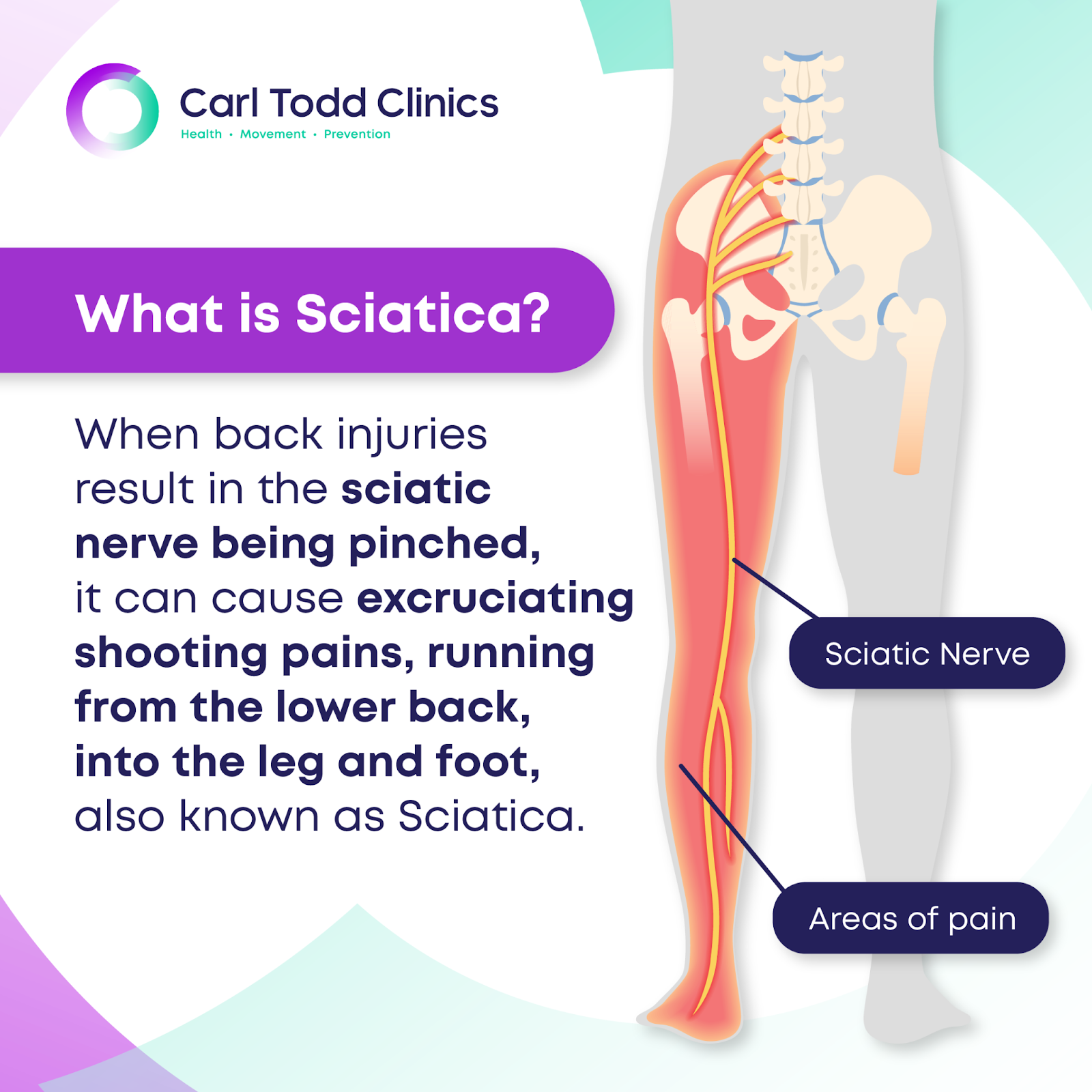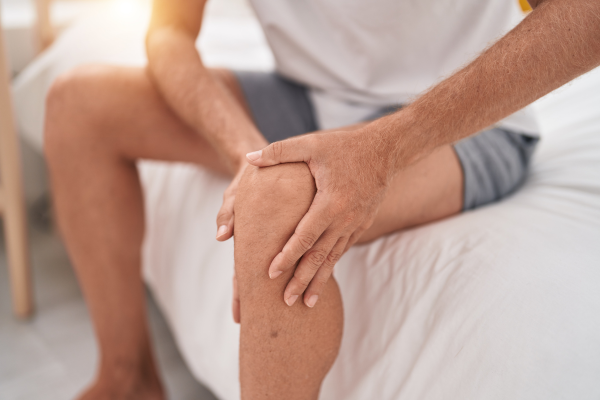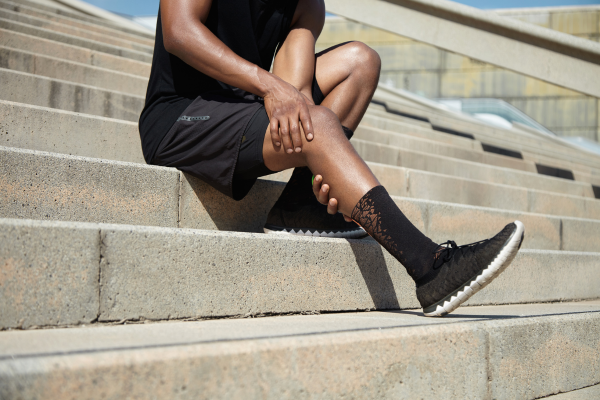Sciatica is a common type of back pain affecting 10-40% of the population. It’s not typically a dangerous condition (although some people complain of sciatic nerve pain!) and it can get better on its own or with treatment. However, in more serious cases, surgery may be needed.
In this article we’ll explore what sciatica is, the symptoms and the risk factors. We will also take a look at what causes sciatica, how it is diagnosed as well as how to get rid of sciatica, immediate relief for sciatica pain and sciatica treatment.
What is Sciatica?
Sciatica is where the sciatic nerve becomes irritated or compressed, causing pain in your lower back area. There are two sciatic nerves, one on either side of the body. The nerves run from your hip, buttocks and down to the leg, stopping below the knee. Sciatic pain radiates into the buttocks and leg which can cause numbness or tingling all the way down to the foot. This pain can range from a mild ache to a sharp severe pain.

Types of Sciatica
There are a few different types of sciatica which are classified based on the underlying cause, the location of the nerve compression and the symptoms experienced. Let’s explore the different types of sciatica:
Acute sciatica
With acute sciatica, symptoms appear suddenly but typically resolve within a few weeks. The pain can be self-managed and normally doesn’t require treatment.
Alternating sciatica
This type of sciatica affects both legs alternately. Alternating sciatica is rare and may result from injury of the sacroiliac joint.
Bilateral sciatica
Pain occurs in both legs at the same time. Again, this type of sciatica is rare and can occur from central spinal problems like spinal stenosis or from changes in the vertebrae.
Chronic sciatica
Chronic sciatica pain lasts for more than three months and requires more extensive treatment. Depending on the cause, this treatment can be surgical or non-surgical.
Sciatica symptoms
The symptoms of sciatica can radiate from the lower back to the buttock down to the thigh and leg.
- Pain occurs due to the pressure on the affected nerve. This pain can feel like an electric shock, a burning sensation or a shooting pain.
- Pins and needles can occur because signals from your lower back or leg have trouble reaching the brain.
- Muscle weakness is a more severe symptom of sciatica and can be felt in the leg and foot, making it difficult to lift your leg off the ground.
- Urinary or bowel incontinence is a very severe symptom of sciatica, where the signals that control your bladder or bowels aren’t reaching their destinations.
What causes Sciatica?
Any condition that affects the sciatic nerve causes sciatica. These can include:
- Injuries
- Pregnancy
- Osteoarthritis
- Spinal stenosis
- Herniated disks
- Tumours or cysts
- Foraminal stenosis
- Cauda equina syndrome
- Conus medullaris syndrome
What can cause or impact sciatica?
There are many different factors that can contribute to an increased risk of sciatica, from your age, to medical conditions and physical health. Let’s explore the risks that can worsen sciatica:
Age
Sciatica affects people of all ages but it’s most commonly seen in people between the ages of 30-50. As you get older, wear and tear on your spine can lead to sciatic nerve pain and herniated disks. There’s also the increased risk of developing other conditions that can lead to sciatica.
Diabetes
Diabetes affects the way the body uses blood sugar which increases the risk of nerve damage, increasing the risk of sciatic nerve pain. Circulatory problems related to diabetes can also interfere with blood flow to the spine, worsening the symptoms of sciatica.
Physical inactivity
Lack of exercise and sitting down for long periods of time can increase the risk of herniated disks. On the flip-side, some high-impact exercises that put strain and pressure on your back may also increase the risk of sciatica; it’s important to have a balance and to make sure high-impact activities are done slowly and safely.
Obesity/excess weight
Those who are obese or pregnant have a higher risk of experiencing symptoms of sciatica due to excess weight and stress on the spine. The more weight you carry, the more your muscles have to work which can lead to back strains and other issues.
Present or past back injury
Nerve injuries to the back may occur due to broken bones, torn muscles or slipped vertebrae. These nerve injuries are most commonly seen after major acts of trauma such as a car crash and can increase the risk of sciatica.
Incorrect lifting form/heavy lifting
Lifting items with the incorrect posture, or repeated twisting and bending motions, can increase the risk of sciatica. This is because strain is put on the lower back which can lead to sciatic nerve compression. Heavy lifting can also put immense pressure on the lower back which can lead to herniated disks, increasing the risk of sciatica.
How is Sciatica diagnosed?
Sciatica is diagnosed by a healthcare professional who will use a combination of methods to check your range of movement and strength.
Firstly, they will review your medical history, ask about your symptoms and then the physical examination will take place. Sciatica sometimes causes visible changes in how you walk so your healthcare professional will examine those changes.
They may also carry out the straight leg raise test which involves you lying on an exam table with your legs straight out. The healthcare professional will then slowly raise your leg towards the ceiling and ask when you start to feel any symptoms. Other strength checks may also be done to help determine if any other factors are contributing to your sciatica.
Tests can also be done to diagnose sciatica which include:
- Nerve conduction velocity study
- Electromyography
- Spine X-rays
- Myelogram
- CT scan
- MRI scan
How to get rid of sciatica
Alleviating sciatica pain can be done by combining osteopathy with medical treatments and home remedies. Osteopathy will involve spinal adjustments and soft tissue massage to help reduce sciatic nerve pain and pressure. Over-the-counter pain medication may also provide relief.
Immediate relief for sciatica pain
Easy, at home treatments can be done to find immediate relief for sciatica pain. These treatments include:
- Applying a heat pad or ice pack to the affected area.
- Standing up straight and keeping a good posture to reduce sciatica pain.
- Be as active as possible and don’t let sciatica pain keep you bed bound.
- Try at home back exercises to strengthen the nerves where there is sciatic nerve pain.
Sciatica treatment with Carl Todd Clinics
Wondering how to get rid of sciatica? Osteopathy offers effective pain relief for those affected by sciatica, treating the root cause of the problem. When treating a condition like sciatica, an osteopath will take care of all of the body’s internal connections. The aim is to reduce pain, improve joint mobility, increase the range of motion and ensure that your general health also benefits from the treatment.
Struggling with sciatica? Our team of qualified and experienced osteopaths are here to help. Book an appointment or get in touch with us to discuss a suitable treatment program.





